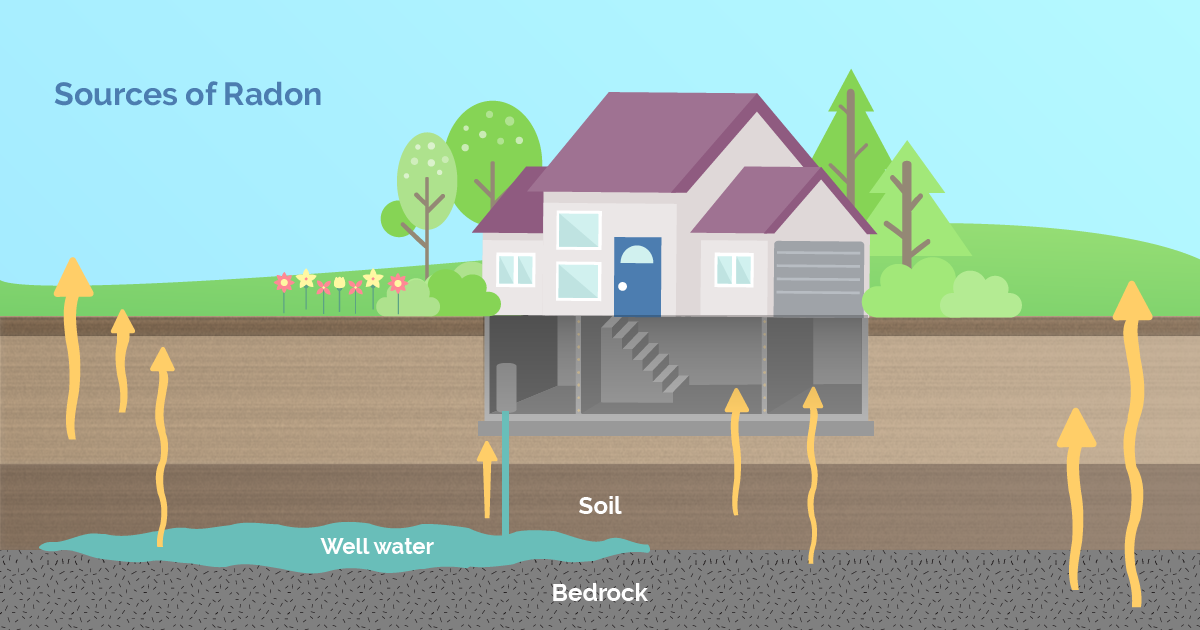United States EPA
Is radon really bad for you?
Breathing radon over time increases your risk of lung cancer. Radon is the second leading cause of lung cancer in the United States. Nationally, the EPA estimates that about 21,000 people die each year from radon-related lung cancer. Only smoking causes more lung cancer deaths.
The United States EPA has established the radon degree of 4.0 picocuries per liter to be the activity degree for radon gas in houses. Definition, take action to decrease radon levels that are greater than 4 picocuries per litre. Bear in mind that radon threat complies with a direct curve of the quantity vs the time revealed to it plus the extra aspect that each individual might be basically at risk to radon associated cancer cells.
Chronic direct exposure to radon gas raises the risk of developing lung cancer cells. In the United States, an approximated 21,000 people die from radon-related lung cancer yearly (compared with 160,000 lung cancer fatalities from cigarette smoking), according to the EPA. Radon is the second leading root cause of lung cancer, as well as it's the leading root cause of lung cancer cells in nonsmokers, according to the agency.
Is radon mitigation really necessary?
When radon gas enters the body, it exposes the lungs to small amounts of radiation. In small quantities, experts say this is harmless. However, in persistent exposures or larger quantities, radon can damage the cells of the lining of the lungs, increasing a person's chance of developing lung cancer.

It can also be launched from developing materials or with water originating from radon-contaminated wells, according to the National Institutes of Health And Wellness (NIH). Radon degrees can be better in houses and buildings that are well-insulated, tightly sealed or improved soil abundant in the contaminated elements uranium, radium and thorium.
- Lung cancer risk increases 16% per 2.7 pCi/L rise in radon exposure.
- Radon gas is a naturally-occurring byproduct of the contaminated degeneration of Uranium in the soil.
- Relying on your geographic place, the radon levels of the air you breathe beyond your residence might be as high as 0.75 pCi/L.
- The nationwide standard of outside radon levels is 0.4 pCi/L and it is approximated by the National Academy of Sciences that outdoor radon levels trigger roughly 800 of the 21,000 radon induced lung cancer cells fatalities in the US yearly.
- The US EPA has placed it clearly, stating, "Any kind https://slashdot.org/submission/0/why-not-try-this-out of radon exposure has some threat of creating lung cancer cells.
How do you eliminate radon?
Possible symptoms include shortness of breath (difficulty breathing), a new or worsening cough, pain or tightness in the chest, hoarseness, or trouble swallowing. If you smoke and you know you've been exposed to high levels of radon, it's very important to quit smoking.
If they are exposed to radon, individuals who smoke or made use of to smoke have an also better possibility of establishing lung cancer. You may only consider what you're exposed to outdoors when you assume regarding air pollution. Yet indoor air quality in your house matters, too, and it can be majorly impacted by the existence of a contaminated gas called radon. This gas can accumulate to hazardous degrees and increase your danger for developing lung cancer-- also if you don't smoke, according to the American Lung Association.
What to Learn about the Threats of Radon Gas in Your Home

Radon-222 has Article source actually been categorized by International Company for Study on Cancer as being cancer causing to humans. There suffices proof for the carcinogenicity of radon as well as its degeneration products in people for such exposures. He was informed that residing in the house was the matching of smoking cigarettes 135 packs of cigarettes a day, and he and his household had increased their danger of developing lung cancer cells by 13 or 14 percent.
How long does it take for radon to cause cancer?
Fact: You will reduce your risk of lung cancer when you reduce radon levels, even if you've lived with an elevated radon level for a long time. Keep in mind that radon levels below 4 pCi/L still pose some risk and that radon levels can be reduced to 2 pCi/L or below in most homes.